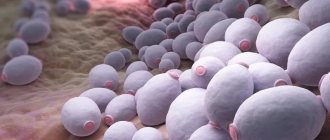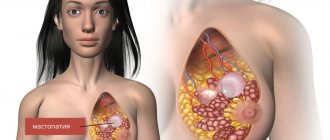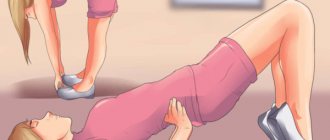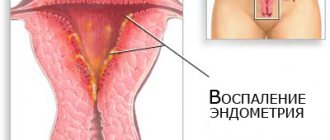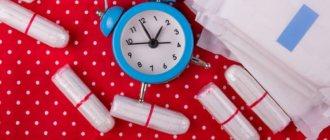20.12.2016
What is thrush or candidiasis in children? This is a disease that occurs as a result of the fact that a fungus called Candida begins to multiply and exist on the mucous membrane. This fungus is present in a healthy human body, only in small doses.
Some factors begin to have a negative effect on it, it begins to multiply on the mucous membrane, and inflammatory processes begin. Factors include: reduced immunity, use of antibiotics in large quantities.
Candidiasis in guys - description, causes, treatment and prevention
In men of any age, the Candida fungus is part of the healthy sexual microflora with the same “rights” as in women.
But thrush in guys is observed much less frequently. The main parameters of the habitat of its pathogen depend on the hormonal background. And among representatives of the fair sex it changes much more strongly and more often (each stage of the reproductive cycle is “driven” by its different components). It is easier for young men to get rid of its manifestations on the first try and forever.
Prevention of thrush
Constant care of your child’s skin is mandatory, especially carefully during and after suffering from any illness. Taking antibacterial drugs and other antibiotics must be supplemented with prophylactic antifungal drugs. It is also necessary to treat thrush in the mother during pregnancy and in all family members.
Children who:
- my mother suffered from thrush during pregnancy;
- premature babies;
- suffering from severe congenital diseases.
Candidiasis can also be prevented by sterilizing bottles and nipples. It is necessary to wash children with special gels for intimate hygiene, instead of soap, which make the environment more alkaline.
A guy has thrush: reasons
In the stronger sex, this phenomenon cannot be attributed to PMS, but it more often becomes the result of superinfection with another strain. You can become infected with it as a result of unprotected sexual intercourse with a partner who owns it (fungus of the genus Candida has plus or minus 40 species).
It also occurs in those who have had sex with people in the acute stage. Regardless of the strain, during this period the fungus is especially active and is capable of causing disease even with healthy immunity - in the carrier and others to whom it will be transmitted during this period through contact.
There are also internal scenarios of the disease, provoked by processes taking place in the body itself. Candidiasis in a guy can occur due to:
- diabetes mellitus;
- against the background of adenoma, prostatitis, prostate cancer;
- HIV progress;
- use of antibiotics for any possible reason, especially in a general course;
- other sexually transmitted infection;
- an abundance of unprotected contacts with different partners in a short period of time;
- taking immunosuppressants (as during allergy season or in the presence of autoimmune pathology - psoriasis, systemic lupus, erysipelas);
- pathologies (especially tumors) of the thyroid gland, adrenal glands, testes;
- the use of steroid drugs (professional or amateur sports, but with the desire to accelerate the onset of results, as well as attempts to increase potency and duration of sexual intercourse through creams with androgens).
Constant hypothermia of the genitals (winter fishing, mountaineering, swimming in pools with cold water), long-term peaks at work and in the family, alcoholism, and insufficient hygiene can contribute to the development of a pathological process on the penis, especially under the foreskin.
What to do if signs of thrush appear?
At the first appearance of symptoms, you should immediately contact your family doctor (pediatrician), or a pediatric gynecologist/urologist if thrush appears on the child’s genitals. In teenage girls, for example, vaginal candidiasis is more common. It is especially often recorded in the following conditions (they are no longer uncommon these days):
- taking antibiotics;
- frequent sexual intercourse with different partners;
- taking hormonal medications, including contraceptives;
- pregnancy.
Thrush often does not appear on its own, but as a sign of a more serious illness. Treatment should be prescribed by a doctor, taking into account individual characteristics. When pathology appears in a small child, the mother and other family members should also be examined for thrush.
Diagnosis: symptoms and signs with photos
In terms of how the disease usually manifests itself, the number of differences between men and women in terms of sensations is also limited. They relate mainly to the localization and patterns of spread of the fungus from the primary focus.
In the fair sex, itching and burning begin from the vagina, gradually spreading to the vulva and clitoris. Infection with urethral fungus, although it is shorter in women, occurs less frequently.
And in a strong person, the initial zone of infection in the vast majority of cases is located on the head; first of all, the pathogen strives to capture its entire surface, causing balanitis. The next “step” of the pathogen is directed “against” the urethra - with the formation of urethritis and cystitis in the coming days.
Spread beyond the foreskin to the skin of the penis becomes the third stage. In a pronounced immunosuppressive state, the pathogen invades the pubic area, large femoral folds, and the skin of the scrotum. Further, the “road” is open throughout the body - not only to the gluteal fold, but also to the bends of the knees, elbows, and armpits.
A complication of the advanced process that is typical for men and not so common among women is its transfer to the hands due to closer and longer contact with their skin when emptying the bladder. You can tell that a patient has candidiasis by the characteristic lumpy, whitish coating on the head and everywhere on the affected skin, especially in its folds and natural texture. It is clearly visible in the photo below.
This plaque is easily removed, but the skin underneath is hyperemic, covered with erosions, and readily bleeds. An unpleasant sour odor is felt, and the patient subjectively experiences itching and pain when urinating. With cadidal urethritis, threads of pseudomycelium of the fungus can be detected in the morning discharge from the urethra even with the naked eye.
Complications
Due to the characteristics of a child’s body, infectious diseases can quickly spread to other organs and systems. Therefore, in early childhood, thrush on a child’s skin can quickly spread to the groin area and other areas of mucous membranes on the body .
This condition can only be treated surgically. Therefore, thrush must be diagnosed and treated promptly. In addition, other serious complications may occur against the background of thrush, including the generalization of the process that can lead to the development of sepsis - blood poisoning. A bacterial infection may also occur, spreading, among other things, to internal organs. Oral candidiasis can become chronic, leading to constant relapses. As a result, this provokes nutritional disorders, allergic reactions, and decreased immunity.
Treatment of candidiasis in guys
Delaying this stage potentially leads to scarring of the skin of the penis and foreskin with its phimosis (a narrowing that makes sexual intercourse impossible and can only be cured by circumcision).
Thrush in guys, the symptoms of which are pronounced, the yeast-like fungus quickly spreads to the skin of the perineum and fingers, indicates severe immune deficiency and requires its treatment in parallel with the treatment of the infection. Separately, they will still have no effect. For this purpose the following are used:
- tablets (or rather, capsules) Diflucan or Mikosist - one-time, in a dosage of 150 mg, orally. Both products contain fluconazole, an extremely effective fungicide, but with unsafe complications for the liver. They are typical of the imidazole series due to the identity between the enzymes used by the Candida fungus and the hepatocytes of the body's own organ. Fluconazole in it is also the most “picky” when it comes to distinguishing between them. 1 capsule of Mikosist will cost 250-290 rubles, and 28 (maximum quantity) - 2035 rubles. Diflucan costs around 390 rubles. for 1 piece or 2255 rub. – for 12 units;
- ointment/cream Clotrimazole - as the name implies, also based on an imidazole derivative. But these substances are absorbed through the skin to an insignificant fraction of a percent, and local forms of drugs with them can be used for long courses. Clotrimazole is applied to the affected area in the mornings and evenings until the symptoms disappear, and therapy is continued for an additional week to ensure that the fungus is cured. It costs 30-233 rubles. (the cheapest drug is made in India);
- Pimafucin is a cream with natamycin, a highly effective antibiotic for fungal infections. It is used up to 4 times a day, locally, until the relapse subsides, plus 5 days for “guaranteed” eradication of the pathogen. Prices for it occupy an average niche - from 300 to 435 rubles;
- nystatin ointment is also based on a polyene antibiotic, a chemical “relative” of natamycin. It is used in the morning and evening, on average up to 10 days, but the course can be freely extended up to 30 days. Depending on the dosage of the active substance and the volume of the tube, they ask for 40-83 rubles;
- Candiston is an exclusively herbal-based spray that does not give side effects. It contains 2 components of aloe juice (the immunostimulating properties of the plant have been scientifically confirmed) - aloin and saponins. Plus, coconut oil extracts (caprylic acid), the main phytoncide of the spices oregano and thyme called thymol, the polysaccharide inulin. Candiston promises to cure thrush in a man in 7-10 days, provided that it is applied twice per day. It will cost 990 rubles.
Treatment of childhood candidiasis
Today, due to the prevalence of the disease, every parent should know how to treat candidal stomatitis in children and by what means. Therapy should begin at the earliest stage, and antibiotics should not be taken at this time. The treatment process consists of destroying the infection (fungus), completing the pathogenic process and stimulating the body's immunity.
Drugs for thrush are much more effective before the disease transforms into a chronic stage. And since the signs of candidiasis manifest differently in different babies, parents are simply obliged to monitor the appearance of any changes in the baby’s mood and behavior and know how to treat thrush at first.
However, only a pediatrician can determine the degree of development of the disease, diagnose it and prescribe a course of treatment. So what means are used to treat candidiasis in infants?
Zelenka
A disinfectant that turns out to be the first remedy when thrush appears on the lips of an infant. Before treating with brilliant green, you need to make a simple composition.
- Take 5 drops of the product, 1 teaspoon of hydrogen peroxide and a similar volume of water.
- Ideally used to treat the groin area, ulcers on the lips, face and skin.
The majority of pediatricians recommend brilliant green to a newborn child.
Blue
An excellent antiseptic agent recommended for children to treat the oral cavity.
- It is better to carry out the entire procedure 3 hours after feeding using a cotton swab. This will help prevent the gagging instinct.
- The frequency of this operation is 6 times a day.
- Significant positive progress is observed already on the 3rd day.
- This oral solution can be found in pharmacies.
Levorin
Levorin is an antibacterial antifungal tablet characterized by fungicidal properties. They belong to the polyene class of antibiotics. The high effectiveness of the drug is associated with its effect on the permeability of fungal cell membranes.
- These tablets lead to increased sensitivity of fungi, as a result of which they die intensively.
- An effective remedy in the fight against microorganisms of the genus Candida, amoeba, and leishmania.
Holisal
Pediatricians prescribe the drug to children as local therapy. For the treatment of children under 1 year of age, a pediatrician's appointment is required. The use of the gel involves simultaneous treatment of the mother's nipples to prevent re-infection.
- The effectiveness of the product, as the description indicates, appears after 3-4 minutes and lasts 2-8 hours.
- Doctors do not recommend using the gel more than 3 times a day and immediately after feeding.
If thrush on the child’s tongue has developed due to constant regurgitation, pediatricians recommend changing feeding techniques.
If after 3 days of self-therapy there is no improvement, you should contact a specialist. He usually prescribes more powerful antifungal agents, for example, Nystatin or Fluconazole. Doctors say that babies under 3 months of age are a particularly high-risk group.
Preventive measures
Thrush in guys is easier to treat than in women and older people. But the optimal solution is to prevent its development. You should not forget to move the foreskin of the penis when washing.
In its folds, third-party microflora feels “at home,” and the ideal one for reproduction in the form of smegma quickly turns it into an aggressor, even if it is harmless in nature.
It is important to avoid too tight, synthetic underwear, especially in hot weather. It is recommended to change it and carry out hygiene procedures at least once a day; do not overcool the lower part of the body and genitals in autumn and winter.
Post navigation
Features of thrush in boys Not all mothers have heard of the appearance of candidiasis in boys of different ages. Candidiasis in young boys The causative agent of thrush in boys, like adults, is represented by a fungus called Candida. Mothers begin to note with alarm the appearance of the first signs of disease in the genital area: Drops of whitish mucus on the head or underwear Discharge with a sour odor Itching sensation in the perineum Swelling and swelling of the head The main reason that the Candida fungus begins to develop rapidly is the long-term growth of colds and thrush through antibiotics, constant use of diapers and poor personal hygiene.
Candidiasis in boys: manifestations, causes, treatment In adolescence, every guy begins to have problems.
Add a comment Cancel reply Your e-mail will not be published. Teenager Polygynax is used for thrush according to the recommendations and prescriptions of the doctor, according to the teenager with thrush. You need to know what the drug contains, in addition to nystatin, aimed at combating Read more.
Terzhinan is a medicine that was developed by one of the most famous pharmacological companies in Moloynitsa. The drug is patented as a combination product with increased effectiveness in the treatment of fungal infections, Read more. With the help of lactic acid, the pH of the vagina is reduced, creating a more acidic environment. Glycogen acts as a nutrient medium to Read more.
Malch tetraborate, used in the treatment of thrush, is one of the most effective and inexpensive means of combating fungus. This disease has severe symptoms and Read more. Popular post Nail candidiasis - treatment However, individual lesions of the nail plates can also be observed. The occurrence of candidiasis can occur at Read more. Headings Types of candidiasis Diagnosis of thrush Treatment of thrush Thrush scrotum of children Thrush in women Thrush in men Consequences of thrush Preparations Causes of thrush Prevention of thrush Symptoms of thrush Articles.
Upon microscopic examination of smears, Candida albicans can be found in the mucous membranes of the intestines, mouth, vagina and skin.
As soon as conditions change, the quantitative composition of these important microorganisms also changes. And from useful they turn into harmful microbes that cause discomfort.
Eliminating the problem with medications
In boys, thrush manifests itself as pain when urinating, itching in the genital area and the appearance of a white, cheesy coating on the head of the penis. And if a small child immediately complains to his mother about pain and itching, then the teenager may be embarrassed to tell his parents about this delicate problem. Therefore, adults should ensure that their children are aware of the dangers of self-medicating or ignoring the disease and always seek their help if any unusual symptoms occur.
Treatment for thrush depends on the boy's age. Thus, adolescents 16 years of age and older can be prescribed drugs based on the following antifungal substances:
The name and dosage of drugs for the treatment of thrush are prescribed by the doctor based on test results, taking into account the age of the teenager, the cause of the disease and possible concomitant diseases.
Boys under 16 years of age are usually prescribed topical medications. The most common of these is sodium tetraborate, or borax. This medicine is an antiseptic solution contained in a dark glass bottle. To treat thrush, you need to carefully remove the cheesy coating from the head of the penis, and then apply a piece of bandage soaked in a medicinal solution to it.
Another effective treatment for thrush in a boy on the wee is Miramistin. It is available in the form of a solution or spray and is used as an antiseptic for people of any gender and age. In addition to a pronounced antifungal effect, the drug destroys microbes and viruses, and also enhances the activity of human immune cells and accelerates the healing process of wounds. Therefore, it is used as compresses and lotions, applied to the head of the penis.
Reasons: why does thrush bother teenage girls?
- Constant colds
- Chronic diseases of the ENT organs
- systemic treatment;
- Persistent form of the disease. It is characterized by the fact that signs of thrush are constantly observed, despite sanitation and specific therapy.
- Sowing the material onto spheres nutritious for the fungal agent
Let's briefly look at each of them.
When a child grows up a little and begins to grab toys with his hands, he definitely strives to taste them. It is possible that Candida secretly settled on some rattle or spoon.
Proper treatment of thrush in adolescents plays a big role in later life and affects the ability to have children in the future. Children should not self-medicate and hide symptoms of the disease from their parents.
Use of traditional medicine methods
Most pharmaceutical drugs for the treatment of thrush are not recommended for use in boys under 16 years of age. For children, it is better to use safe traditional medicine. However, before starting any treatment, it is necessary to consult with a specialist who will confirm the effectiveness of the method and prescribe the dosage and time of exposure. After all, the head of the penis in a boy or teenager is an extremely sensitive and vulnerable part of the body.
The most famous folk remedy for thrush is a soda solution. Its action is to change the acidic environment of the mucous membrane of the head of the penis to alkaline, that is, unfavorable for the growth and reproduction of the Candida fungus. With regular exposure to this liquid, fungal colonies decrease in size and eventually disappear completely. To prepare the solution you will need the following components:
Stir 1 tablespoon of soda in 0.5 liters of warm water and add 1 drop of iodine. Moisten a cotton sponge with the resulting solution and treat the head of the penis until the white coating is completely washed off. The boy needs help to perform this procedure, but the teenager can do it on his own.
A peculiarity of thrush is the development of an inflammatory process, as a result of which microcracks appear on the membrane of the head of the penis. This is why a teenager experiences itching, burning and pain during urination. Alternative treatment methods will help eliminate the consequences of fungal activity. One of them is lubricating the head of the penis with liquid honey. This bee product has long been used to accelerate tissue healing. The only contraindication for this treatment is an allergy to honey.
Decoctions of medicinal plants will also help remove the effects of inflammation. These include:
To prepare the decoction, add 1 tablespoon of dry raw material to 0.5 liters of clean water and simmer in a water bath for 10-15 minutes. After cooling, the liquid is filtered and used as a lotion for the mucous membrane of the head of the penis of a boy or teenager.
Nutrition as a treatment
When dealing with candidiasis, it is extremely important to exclude from your diet foods that contain simple carbohydrates, these include:
- fruit juices;
- flour sweets;
- sugar;
- honey;
- alcohol.
Products that can be consumed include:
- lean meats, in particular chicken and turkey;
- Fish and seafood;
- mushrooms, nuts and legumes;
- eggs in small quantities;
- porridge and pasta;
- olive oil.
It is better to steam or stew vegetables. But you should not forget about the importance of consuming eggs and meat in reasonable quantities. Drinks such as coffee and tea should be limited, or better yet avoided, because they interfere with the action of antifungal medications.
To speed up the healing process, it is also worth increasing the consumption of fermented milk, but lactose-free products that contain lactobacilli. This could be: fermented baked milk, kefir, low-fat yogurt.
Conditions for effective disease control
Effective treatment of thrush in boys and adolescents is impossible without eliminating the cause of the disease. Therefore, therapeutic manipulations need to begin by explaining to the child where the causative agent of the disease comes from and what actions contribute to the activation of fungal colonies. By teaching a boy to eat properly and perform hygiene procedures, as well as to receive proper treatment, you will help not only overcome thrush, but also prevent its occurrence in the future.
The most common cause of thrush is taking a long course of antibiotics. After all, the main disease for which the drugs were prescribed had already weakened the teenager’s immunity, and the antibacterial agents destroyed many beneficial bacteria that inhibit the proliferation of yeast-like fungi. Therefore, it is necessary to explain to the child that the treatment of any disease should be prescribed by a qualified specialist who will take into account all the characteristics of the male body and prescribe probiotics after antibiotics - drugs with beneficial living microorganisms.
Another factor that requires immediate correction is the nutrition of adolescents. If a boy consumes a large amount of sweets every day and washes them down with carbonated drinks, then his pancreas may not be able to cope with the production of hormones that lower blood sugar levels. As a result, an environment favorable for the proliferation of Candida fungi is created on the mucous membranes of organs. Therefore, during treatment, do not allow your child to eat desserts, yeast baked goods, marinades with vinegar, or fast food.
Parents need to pay attention to how the boy or teenager performs daily hygiene procedures. Make sure that he has a personal washcloth and towel, and that the shower gel is mild and does not change the pH of the mucous membrane of the head of the penis.
Treatment
Treatment of thrush depends on the degree of the disease, location and age of the child. Treatment should eliminate the causes of the disease. Then it is effective. It is difficult to treat an infant, since many drugs have age restrictions.
Drugs
Sodium tetraborate
Sodium tetraborate (borax) has a strong antiseptic effect, an agent that inhibits the development of fungi. Used for uncomplicated forms of the disease. Sodium tetraborate is a solution in glycerol. Tampons moistened with sodium tetraborate solution are applied to the areas affected by the fungus.
Sodium tetraborate is a fairly effective treatment for genital thrush. Sodium tetraborate is also used to treat thrush in the mouth, tongue, and lips. Sodium tetraborate has been used for many years for the topical treatment of thrush.
Nystatin
Nystatin is an antifungal drug. Release form: tablets, suppositories. Nystatin (tablets) is an effective remedy against Candida fungi. Nystatin (tablets) is taken as prescribed by a doctor.
Nystatin can treat thrush of any location. Nystatin (tablets) is used as a prophylactic agent during long courses of antibiotics to treat plaque on the tonsils. Suppositories are used to treat vaginal candidiasis with nystatin.
Fluconazole
Fluconazole is an antifungal agent, synonymous with Diflucan. Eliminates the causes of the disease. Used orally and intravenously. Not used to treat children under 16 years of age. Compared to nystatin, fluconazole and diflucan have more pronounced antifungal activity.
Miramistin
Miramistin is a cationic antiseptic. Miramistin has antiviral, antifungal, antibacterial activity. Miramistin stimulates local immunity and has anti-inflammatory properties.
Causes
Thrush (candidiasis) is caused by a yeast-like fungus of the genus Candida. The spores of this fungus live everywhere: on the skin of a person’s face, hands, feet, and on the mucous membranes of the mouth and rectum. The pathogen, being in the body and on the mother’s body, can easily infect the newborn. If the immune system works normally, the microflora is balanced, then the disease does not occur.
Thrush is transmitted through a kiss or a poorly washed nipple or breast. It is easy to infect a newborn.
Beneficial microflora inhibits the growth of fungi, maintaining balance. But in a newborn child, the beneficial flora is just being formed, it is not yet in sufficient quantity, therefore, under certain favorable conditions, fungi begin to multiply uncontrollably and cause a disease called candidiasis.
Breast milk contains immune antibodies against many pathogens, which helps the baby not get sick. The mother's immunity protects the infant. But sometimes various reasons have an adverse effect on the body, after which the conditionally pathogenic flora, which includes fungi of the genus Candida, becomes pathogenic.
Reasons contributing to the development of thrush:
- too dry and warm air in the room, causing drying out of the oral mucosa (in such conditions, any infection is easily transmitted to the child);
- taking antibiotics, as a result of which the balance of beneficial and opportunistic microflora is disrupted;
- unbalanced nutrition of the mother, the presence of baked goods and a large number of sweets in the diet (especially critical in combination with taking antibiotics);
- violation of personal hygiene rules before and after breastfeeding, as well as abuse of antibacterial soap or other antiseptic agents;
- prematurity, immunodeficiency states;
- other reasons.
Thrush on the penis
Thrush on the head in men
Many representatives of the stronger half mistakenly believe that such an intimate disease as thrush is a purely “female” inflammation. Therefore, the appearance of white spots on the penis is not always associated with a fungal infection and immunity problems. The disease has long been studied by specialists and responds well to treatment. But, given the “special” location of the inflammatory process, men put off visiting a doctor, endangering their genitourinary system.
We suggest you familiarize yourself with: Orungal medicine for the treatment of fungus
Contrary to popular belief, the appearance of male thrush on the penis is not always associated with sexual intercourse. The main cause of the disease is any decrease in local or general immunity, which can be caused by various reasons.
In 85-90% of cases, laboratory tests determine the main causative agent is a fungus from the genus Candida - Candida albicans. This type accounts for 9 out of 10 diagnosed cases of the male form of thrush. The fungus is an opportunistic fungus that is found on the skin or mucous membranes of almost every person. Its colonies are found in minimal quantities in the intestines, starting from birth or early childhood.
There are several main ways of infection with Candida fungus, which affect its prevalence:
- when using personal items of a sick person;
- when visiting public bathing places;
- during sexual intercourse with a thrush-infected partner.
Photo of thrush on the penis
A physically healthy man may never experience the appearance of white spots on the penis and other symptoms of thrush. Candida fungus is very common and is easily suppressed by a man's immune system. But under the influence of certain external or internal factors, the protective forces can weaken and fail.
Experts include internal problems:
- inflammatory diseases of internal organs;
- thyroid diseases;
- hormonal imbalance;
- dysbacteriosis;
- severe acute respiratory viral infection or influenza with antibiotics;
- anemia and other disorders of the hematopoietic process.
White spots on penis photo
Symptoms
Symptoms of thrush in children vary, depending on the location of the disease. Candidiasis can appear in the mouth, throat, tongue, genitals, and skin. What thrush looks like in children can be seen in the photo.
In the mouth
Thrush in children in the first months of life and in newborns is most often localized in the mouth. The primary signs of thrush in a child are a white, cheesy coating on the tongue, gums, and buccal mucosa (see photo). Plaque can be in the form of thin white stripes, plaques, or plugs on the tonsils in the throat.
The mucous membrane under this coating is red and inflamed (see photo). Candidiasis in newborns and older children can be localized on the lips, in the corners of the mouth (cheilitis). Secondary signs are restless sleep, refusal to eat, and crying. Throat candidiasis most often affects children one year of age and older. Usually children weakened by illness or vitamin deficiency.
Body temperature can be within normal limits, or it can be raised to 38 degrees. The child feels weak, unwell, and has a sore throat. But sometimes thrush appears asymptomatically, or with very mild symptoms.
Vaginal
The fungus can affect the walls of the vagina in girls (vaginal thrush); in boys, the skin of the head of the penis can be affected (candidal balanitis). The main signs of vaginal thrush are itching, cheesy discharge, and inflammation of the genitals.
Children who can already speak usually complain to their mothers that their pussy itches; in newborns, thrush causes anxiety and crying.
The main signs of genital fungal infection in a boy are inflammation and swelling of the genital mucosa, hyperemia. Body temperature may be elevated, but more often the temperature is normal.
Stages of candidiasis
In what stages candidiasis occurs in children is an important question for most parents. This will help determine the type of treatment - inpatient or at home. The stages of childhood candidiasis are as follows:
- Easy. – Accompanied by the formation of red spots on the oral mucosa, which are then covered with white, non-merging plaques, reminiscent of cottage cheese. – When cleaning plaques, tissue redness is formed;
- Moderate weight. – Such thrush in any baby is accompanied by the appearance of focal cheesy plaques on the mucous membrane on a swollen, red background, gradually merging and spreading throughout the mucous membrane. – When removing plaque, the surface bleeds, and touching causes pain to the baby;
- Heavy. – With severe thrush, large red areas of the mucous membrane are covered with a cheesy coating. – Moreover, it grows throughout the entire oral cavity (tongue, gums, throat, lips, inner cheeks). – There is an increase in body temperature, the baby refuses to eat, and general lethargy is noted. – If the child is not treated, dehydration occurs, while the infection itself spreads to the intestines.
Causes, symptoms, diagnosis and treatment of thrush in boys
“Thrush”... This disease is known, perhaps, to every woman. But, both men and even boys are not immune from this problem. The paradox is that the more often “thrush” occurs, the less often the “stronger sex” goes to the doctor, although ignoring this disease is fraught with serious complications.
The issue of thrush in boys is broad and multifaceted and covers different age periods from infancy to puberty. At different stages of life, this disease has its own characteristic features, favorite places of manifestation, and therefore different approaches to treatment.
One thing remains unchanged: at the first signs of candidiasis, you should immediately consult a doctor, since self-medication is often not only ineffective, but also harmful.
Thrush in children in the groin area: treatment
Of course, thrush does not belong to the category of difficult-to-treat diseases. It can be cured quickly and effectively, but to do this you should follow all the doctor’s recommendations without missing a single point.
With the right treatment, the symptoms of the disease usually begin to subside within a couple of days, but this does not mean that treatment can be stopped. For a lasting therapeutic effect, you must complete the entire course of treatment, but if it is interrupted, a relapse will most likely occur.
Treatment of childhood candidiasis includes several points, namely:
- local treatment;
- systemic therapy;
- correction of natural microflora;
- immunomodulation.
What is candidiasis?
Candidiasis or thrush is a disease caused by a fungus of the Candida family, which is part of the normal microflora of the human body. The fungus inhabits the mucous membrane of the intestines, oral cavity, genitourinary organs and the surface of the skin without causing the development of the disease. This is the so-called opportunistic microflora.
Why conditional? The fact is that this microorganism can exist in our body for a long time without showing itself in any way, but with the slightest change in the constancy of the internal environment, it shows itself “in all its glory.”
What is thrush?
The expectant mother should cure thrush at the stage of pregnancy planning and strictly monitor her health in the future. This is the best way to prevent childhood candidiasis.
The dosage will be determined based on the girl’s age and weight. These medications must be used with great caution, as they have a lot of side effects and can also cause toxic and allergic reactions.
Teenage girls over 12 years of age can use specially sized vaginal tablets and suppositories.
There are two forms of oral candidiasis in children - acute and chronic.
Features of the causative agent of the disease
The danger of candida varies widely and largely depends on the general condition of the body, the presence of risk factors and concomitant pathology. It has been established that the main risk factors in boys include:
- immunodeficiency states, when the proliferation of the fungus becomes uncontrollable;
- hormonal imbalances, for example during puberty;
- long-term use of antibacterial or cytostatic drugs;
- violation of hygiene standards, including insufficient care for newborns and young children.
All this creates the preconditions for changes in the balance of microflora and the development of an infectious-inflammatory process.
Reasons for development
Fungi of the genus candida are normal human microflora. This means that they are constantly in the child’s body, but under certain conditions they become pathogenic. Their reproduction begins. As a result, damage to the mucous membranes or skin occurs. Typically, candidiasis develops as a consequence of decreased immunity and resistance to infections. There are endogenous and exogenous factors in the development of thrush. Endogenous factors include:
- Abnormal development.
- Premature birth of a child.
- Serious impairment of physiological functions.
- Condition after operations.
- Vitamin deficiency.
- Constant regurgitation.
- Dysbacteriosis.
- Metabolic disorder.
- Low hemoglobin.
- Lack of body weight.
Clinical manifestations in boys: from oral candidiasis to candidal balanoposthitis
The main clinical forms of thrush in boys are oral candidiasis or “thrush” of the oral cavity and candidal balanoposthitis or thrush of the external genitalia.
Oral candidiasis is most often observed during the newborn period, especially in breastfed children. Initially, the fungus enters the child’s body when passing through the mother’s infected birth canal and begins to multiply rapidly if the baby’s hygiene is insufficient.
Basically, the disease manifests itself in the form of whitish films on the inner surface of the cheeks, soft palate, tongue, and gums. If the infection has not become chronic, these deposits can be easily removed with a cotton swab; if the process is advanced, the films are almost impossible to remove without causing pain.
How dangerous is thrush for children and how to get rid of it
Many mothers of children in the first year of life have encountered such a thing as the presence of a white, cheesy coating in the child’s mouth. What is such a raid? Sometimes parents do not pay attention to it, because they believe that it is a consequence of the baby spitting up or the remains of milk in the mouth of the infant. But in fact, such plaque can represent a serious pathology - thrush.
Thrush is a clinical form of candidiasis. This is a disease that affects the mucous membranes, skin, organs and even nails, caused by yeast-like fungi of the genus candida. The name thrush comes from the appearance of the plaque that covers the affected parts of the body. It looks like milk or cottage cheese. In children, thrush most often develops in the mouth.
Diagnosis of thrush
The main methods for diagnosing thrush in boys are a typical clinical picture, confirmed by laboratory data. A modern laboratory has many methods for identifying fungus, but microscopy of a smear discharged from a pathological focus has still not lost its relevance.
In this case, diagnostic sensitivity is in the range of 60-80%. There is also a cultural method, which is based on inoculating the discharge on a special nutrient medium with further determination of the sensitivity of the resulting colony to antibacterial drugs.
Its diagnostic value is 90-95%, but the high cost of this type of study and the duration of its implementation (up to 7 days) sharply limits its use in clinical practice.
A modern diagnostic method is a molecular biological study, in which the DNA of the fungus is determined by PCR (polymerase chain reaction) in real time.
The sensitivity of the method is 90-98%, but the complexity of its implementation and the fairly high cost do not allow this diagnostic method to be placed in first place.
Diagnosis of the disease
Thrush is diagnosed based on clinical data and additional studies, as well as the sensitivity of the pathogen to antifungal drugs. Full diagnostics includes: microscopic, cultural cultures, serological studies.
- In microscopic diagnostics, the affected areas are scraped, dried, and examined under a microscope with the addition of special reagents. In this case, yeast-like cells can be seen.
- During a mycological study, a culture is done to quantify fungal colonies and their susceptibility to antifungal drugs. This is due to the fact that some species are insensitive to certain drugs. Then the treatment may not give the desired result.
- During a serological test, antibodies to the fungus are detected in the blood serum.
Key points of treatment and should you trust traditional medicine?
So how to treat candidiasis in boys? First of all, you should not self-medicate. Despite its apparent simplicity, this disease is dangerous due to its complications, including infertility due to impaired spermatogenesis and even oncology of the head of the genital organ.
In general terms, treatment follows three basic principles:
- Elimination of predisposing factors, namely treatment of the underlying disease, careful hygiene measures, normalization of nutrition.
- Antifungal therapy using drugs.
- Prevention of relapse.
Let us dwell on these points in more detail.
Since thrush most often occurs against the background of antibacterial and cytostatic therapy, it makes sense to try to adjust the medications received and start taking additional medications that restore normal microflora.
For young children, it is necessary:
- wash nipples and feeding bottles with baking soda and boiling water;
- a nursing mother should observe the rules of personal hygiene, wash her hands thoroughly before picking up the baby;
- change diapers in a timely manner, and also use products of the appropriate size.
It is necessary to exclude sweets, baked goods, and sweet carbonated drinks from the diet at least temporarily, since excess glucose in the body can also provoke the development of candidiasis.
In particular, azole derivatives - for example, fluconazole, clotrimazole, which are approved for use in children. Most often, local forms of medications are used in boys.
The drug clotrimazole, which is available in the form of 1% cream and 1% solution for treating affected surfaces, has proven itself well. In the case of chronic candidiasis, it is necessary to use systemic drugs, for example fluconazole, the dosage of which depends on the form of manifestation of the disease and the severity of its course.
It is worth remembering that only a doctor can select adequate therapy.
How to get rid of thrush in a child?
What to do if the diagnosis is confirmed? Before treating candidiasis, you need to be examined by a pediatrician. The attending physician makes an accurate diagnosis and determines the form and extent of the disease. Infantile thrush occurs quickly and without complications, and can be cured without difficulty. To do this, make a solution from soda.
It is not difficult to prepare; to do this, you need to boil and cool water to a temperature of approximately 37 degrees and add 1 teaspoon of baking soda. Then mom takes gauze, wraps it around her finger, soaks it in a soda solution and carefully removes the coating from her tongue. Afterwards it treats the entire oral cavity. For quick results, doctors recommend doing this procedure every 4 hours, preferably after meals. If your baby still uses a pacifier, you can dip it in this solution.
We select a male medicine for the treatment of thrush!
Thrush is a fungal disease caused by yeast-like microorganisms Candida.
It is transmitted mainly through sexual contact and brings discomfort to women and men equally. When choosing a remedy for male thrush, it is important to consider the affected area:
- genitals;
- oral cavity;
- intestines.
The first sign of the development of candidiasis is the appearance of a white coating, reminiscent of thick cottage cheese in consistency. It can be easily cleaned off with a cotton swab, but will soon form again. The disease develops rapidly, worsening the quality of life.
If sexual partners do not use condoms, thrush will be transmitted from man to woman.
In the oral cavity and intestines, candidiasis develops less frequently than in the genitals and mainly affects infants.
Thrush medications for men are divided into groups:
- pills;
- solutions for rinsing the mouth;
- creams, ointments;
- solutions for treating affected areas.
Preventive actions
To prevent the appearance of thrush
child, a pregnant woman should identify the presence of thrush in advance, have it examined in a timely manner and, if possible, treated before childbirth. Also, the newborn should be put to the breast immediately.
In addition, the rules of sanitation and hygiene must be strictly observed in the maternity hospital, this applies to both young mothers and their visitors, as well as maternity hospital workers.
If at the birth of a child there is a suspicion of reduced immunity, he should be examined and determined whether the baby has candidiasis or another disease.
If these rules are followed, the risk of thrush in a child will be minimized both at birth and later.
Tags: treatment, boy, thrush, child
About the author: Admin4ik
« Previous entry
How to protect your child from candidiasis?
- a pregnant woman should promptly treat vaginal candidiasis, especially on the eve of the upcoming birth;
- careful hygiene of the genitals, preferably without the use of chemical irritants;
- You should not try to retract the foreskin ahead of time, since physiological phimosis may be present until three to five years of age;
- It is important for infants to purchase diapers that are sized; older children should wear comfortable, non-squeezing underwear made from natural fabrics;
- Be sure to have a complete and balanced diet to reduce the risk of hypovitaminosis and decreased immunity.
At the same time, a logical question arises: is it worth trusting traditional medicine in such a sensitive issue as the treatment of candidiasis?
Undoubtedly, the most productive treatment is possible only when traditional medicine is harmoniously combined with traditional medicine.
These herbal teas can be purchased at almost every pharmacy. To prepare the infusion, take 1 tablespoon of the plant, pour in a small amount of boiling water and infuse.
With the resulting infusion you can make lotions, compresses, and baths.
It is important to remember that when taking a bath, you cannot forcibly move the foreskin in order to avoid additional trauma to the affected organ.
Under no circumstances should you use iodine, potassium permanganate, or alcohol solutions! They dry out the mucous membranes, and when used in high concentrations can cause burns.
Thus, thrush or candidiasis in children is a serious disease that requires timely treatment from a competent specialist. There are many symptoms of this pathology, depending on the location of candidiasis, and no fewer ways to treat it.
The most important thing is to pay maximum attention to your child, monitor his hygiene, identify allergens in time and eliminate them. If you follow known precautions, there is a high chance of never encountering this problem!
She graduated from the State Budgetary Educational Institution of Higher Professional Education "Smolensk State Medical Academy" of the Ministry of Health and Social Development of the Russian Federation with a degree in Pediatrics, residency in the specialty "Obstetrics and Gynecology". Advanced training under the additional professional training program “Reproductive dysfunction in men and women”, State Budgetary Educational Institution of Higher Professional Education “North-Western State Medical University named after. I.I. Mechnikov" of the Ministry of Health of the Russian Federation, participant in the scientific and practical seminar "Systemic factors of reproductive health" under the program "Sacredness of Motherhood", participant in the master class "Cervix, genital infections, hormones. Features of colposcopy”, participant of the regional scientific and practical conference “Current problems of obstetrics and gynecology”. She also received training on conducting pre-trip and post-trip medical examinations of vehicle drivers, and conducting a medical examination for intoxication. I work at the Demidov Central Regional Hospital in the Smolensk region. Specialization: outpatient obstetric and gynecological care, emergency care in obstetrics and gynecology.
Candidiasis, or thrush, is a fungal disease caused by fungi of the genus Candida. His pediatrician is treating him. In severe cases, if the skin or internal organs are damaged, a visit to a dermatologist, pediatric gynecologist, urologist, ENT specialist, etc. may be necessary. to a specialized specialist.
Causes of candidiasis
The main cause of candidiasis in children is a yeast fungus of the genus Candida, present in the human microflora. But to activate it and increase the number of microorganisms, a number of factors are required:
- weakened immune system;
- frequent viral and colds;
- thyroid diseases;
- diabetes;
- hypovitaminosis;
- taking hormonal drugs or antibiotics for a long time;
- chronic diseases;
- HIV infection;
- intestinal dysbiosis.
The disease often occurs in premature infants and weakened children. If the mother's birth canal has been affected by candida, the baby, passing through it, becomes infected. The risk of developing candidiasis in such a newborn is much higher.
How is infantile thrush diagnosed?
To determine which type of Candida fungus is causing thrush, tests are prescribed:
- urine;
- general and biochemical blood test;
- a smear from the affected areas of the body for the presence of candidiasis;
- cultural culture (placing material taken from a child in a nutrient medium and monitoring the growth of microorganisms. Also in the laboratory, experiments are carried out to identify the reaction of bacteria to susceptibility to a particular antibiotic);
- blood test for antibodies to Candida fungi (serological test).
What is candidiasis?
Parents may suspect the presence of the disease in children when characteristic signs appear. But before treating candidiasis in children, you need to consult a pediatrician who will confirm suspicions or prescribe appropriate tests.
To determine the number of mushrooms, you must do the following procedures:
- Candida fungus culture analysis;
- Examination of scrapings under a microscope;
- Testing blood and other body fluids for the presence of pathogens.
The specialist may also order a test for other diseases of which thrush is a symptom. For example, a test for blood glucose levels if diabetes is suspected. Based on these tests, appropriate treatment for candidiasis in children is prescribed.
